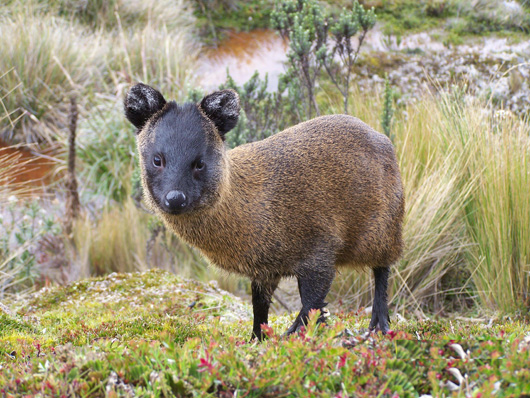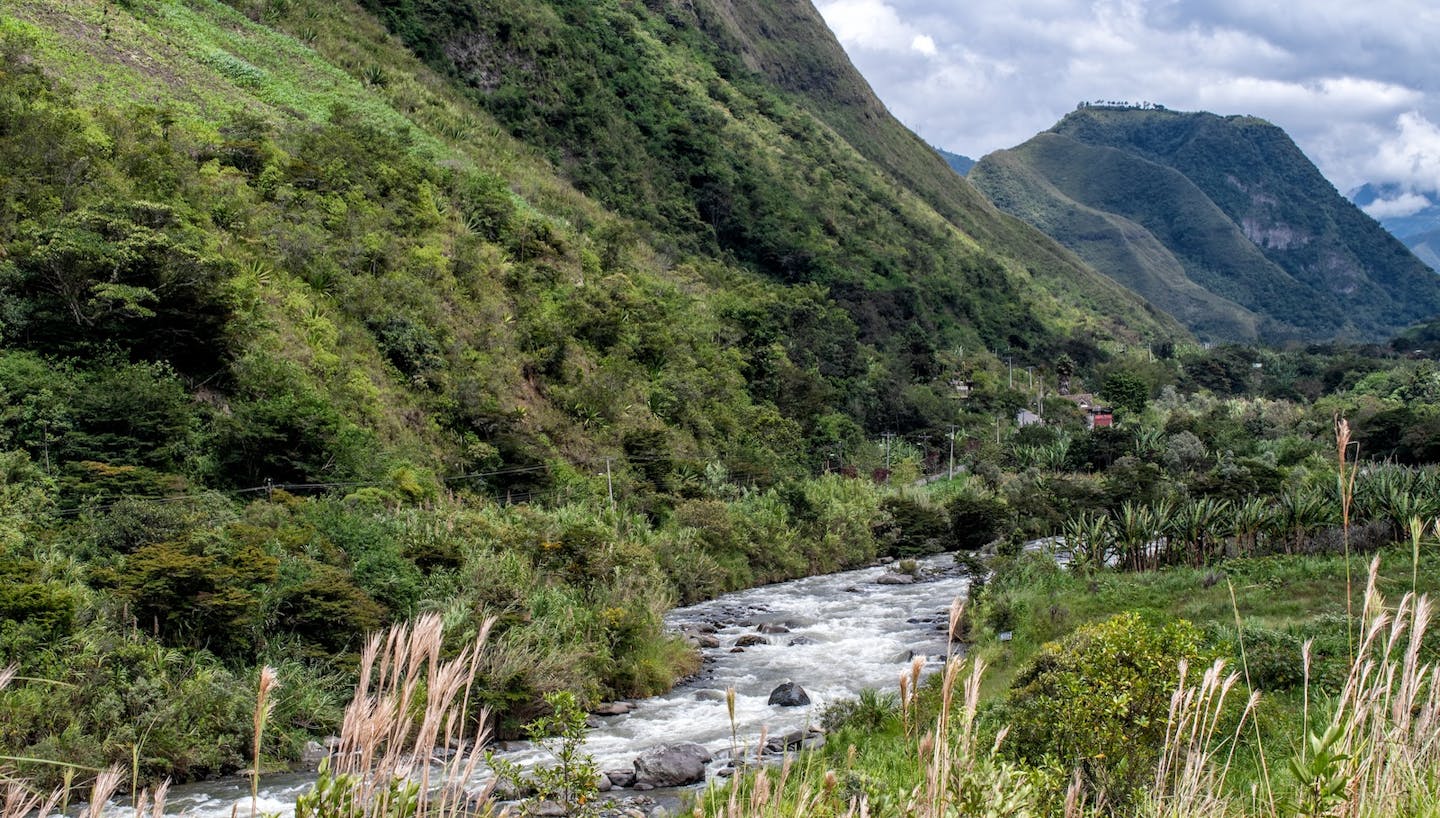In Ecuador's Intag mountains, the value of nature far exceeds the risk of mining
Ecuador’s Intag region is covered in cloud forests, rivers, lakes, native Andean páramos (alpine grasslands), and native bamboo. It spans two of the world’s most biologically significant areas within the Tropical Andes Biodiversity Hotspot, including the Cotacachi Cayapas National Park.

The northern pudú (Pudella mephistophiles). Image credit: Wikabyel, CC by-SA 4.0
Intag is also home to over a hundred species at risk of extinction, including 16 mammals (two monkey species are critically endangered), 22 frogs, 12 plants, two reptiles, and one fish species. Yet these critical services and unique species were threatened by the Llurimagua large-scale copper mining project.
In the 1990s, the Japanese company Bishi Metals explored and discovered copper deposits in the Intag’s Toisan mountain range in northwest Ecuador. An estimated 318 million metric tons of copper ore (2.26 million tons of pure copper) are believed to lie beneath Intag’s biodiverse forests and watersheds. High global demand for copper present an attractive opportunity to grow the national economy—and that demand is expected to increase during a clean-energy transition. Yet copper mining has significant downstream landscape and social costs that have often been excluded from economic analyses by the mining industry. Even so, Bishi Metals projected “massive deforestation,” which would contribute to local “desertification.”
In 2008, Codelco and Ecuadorian state-owned mining company Enami signed a cooperation agreement to develop the $3 billion Llurimagua large-scale copper mine. Located 80km north-east of Ecuador’s capital city Quito, the concession spans nearly 5,000 hectares; open pit mining at the site would produce 120 kilotonnes of ore every day.

Close-up of a copper mine open pit excavation. ID 15375175 © Gwhitton | Dreamstime.com
Earth Economics is a non-profit research consultancy with a mission to quantify the benefits provided by nature to ensure that they are included in decision-making. Earth Economics worked with the visionary community of Intag for two years to identify and value the region’s ecosystem services. In 2011, they published An Ecological Study of Ecuador’s Intag Region: The Environmental Impacts and Potential Rewards of Mining with the support of UK-based Rainforest Concern and Defensa y Conservación Ecológica de Intag (DECOIN), a grassroots environmental organization devoted to conserving northwestern Ecuador’s unique biodiversity.
Earth Economics estimated the value of carbon storage and sequestration, flood protection, improvements to water quality and supply, wildlife habitat, pollination services, and recreation. They found that 17 of 23 ecosystem services produced by Intag ecosystems provide an average of $485M (2022 USD$) in yearly benefits to Ecuador. Considered alongside potential mining, the report concluded that the risks of mining far outweighed the benefits.

Table 18 Annual Ecosystem Service Value Flows for the Intag Region.
In 2022, Intag community leaders used the 2011 report to support an amicus brief in a lawsuit against the Ecuadorian government over mining concessions, and in March of 2023, the Imbabura Provincial Court ruled against the Llurimagua copper mine. The court determined that communities’ constitutional right to consultation about the project had been violated, as had the rights of nature. The court revoked the mining licenses and called for an immediate stop to all work on the Llurimagua mine.
In April 2024, the constitutional court refused to hear the government’s appeal against the provincial court ruling in favor of nature. The court found no grounds to reconsider the case.
In Intag and elsewhere, economic progress depends on healthy communities, healthy people, and sustainable ecosystems, along with the political empowerment of local residents to choose and develop their own model of well-being. Development progress must be resilient to price fluctuations in single commodities and extend beyond the life of traditional extractive industries. Strategic investment in conservation, developing and enhancing the actual and potential sustainable economic alternatives, along with finding ethical markets for the rich diversity of ecosystem goods and services is key to the long-term viability of this special region of Ecuador. As ecosystems in the Intag region become fragmented and the fragile cloud forests become scarcer, it is imperative to support new and existing conservation and restoration projects for the future regional economy.
Integrating the value of ecosystem services into decision-making is a powerful tool that captures the broader benefits of nature, which are often ignored. In the US, this practice is accelerating, driven by federal guidance and action by agencies, like the United States Army Corps of Engineers, who are consulting on valuing co-benefits for investments in water resources.
You might also like
-
.jpg?auto=compress%2Cformat&h=600&w=600)
Ecuador's Yasuní oil referendum: A climate game-changer
Dive into Ecuador's bold decision to prioritize the planet over profit. Discover the implications of the Yasuní oil referendum and its global impact.
-

One Earth and Resolve release 'Conservation Imperatives' – a map of safe havens harboring rare and threatened species
Global biodiversity study identifies 16,825 'Conservation Imperatives' sites harboring rare and threatened species in need of immediate protection.



